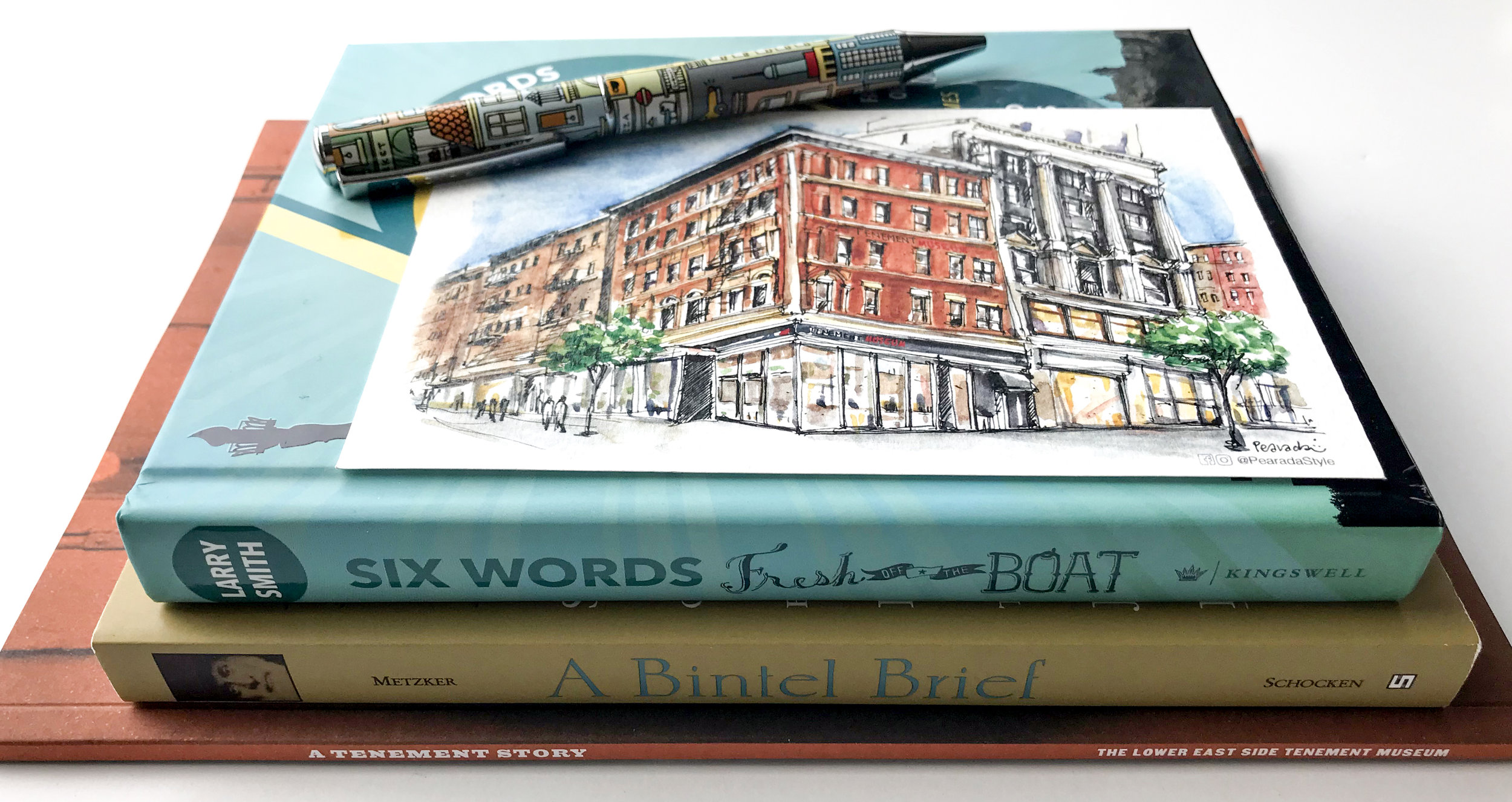Tenement Museum tidbits
Last week I had to be in Manhattan for a few business meetings, so I scheduled in a midday “appointment” to see an exhibit I had written about that piqued my interest: Under One Roof at New York City’s Tenement Museum.
While the museum’s original exhibits in the building at 97 Orchard Street highlight immigrant families who lived there between 1863 and 1935, the new installation down the block at 103 Orchard Street turns its attention to life in this Lower East Side neighborhood during the 1950s, 1960s, and 1970s.
Under One Roof
Over its 127 years as a residence, 103 Orchard Street housed more than 10,000 people. Under One Roof introduces us to three of them: Bella Epstein, Ramonita Saez, and Mrs. Wong.
The stories of these women and their families are told through the room interiors themselves, which are recreated in glorious authentic detail, from the crocheted doilies in Ramonita’s living room to the mezuzah affixed to the doorframes in the Esptein household. But it’s the first-person accounts of family members themselves that bring these immigrant experiences to life.
During the 90-minute tour we meet the families through their own testimony (short recorded audio clips and passed handouts with immigration records, photos, and other details), but these are mere glimpses. My amazing tour guide recounted the families’ experiences, always placing them in the broader historical context and framing a dialogue about the immigrant experience that continues to be of vital importance in our country.
As we were invited to take a seat on Ramonita’s plastic covered sofa and listen to some of the history of the neighborhood, it was inevitable that many of us would find moments of connection, and even consider how our own family stories contribute to our country’s ever-evolving identity.
The families of “Under One Roof” who lived at 103 Orchard Street, from left: Bella Epstein, pictured with her sister, Bluma, moved to the building in 1955; Ramonita Saez, who worked in a garment industry sweatshop and was a single mom of two sons, came in 1962; and Mrs. Wong, who moved to the Lower EastSide in 1968, still lives on the same block today.
Delving Deeper Into the Stories
Upon my return home, I discovered the rich website that does these families’ stories even greater justice. If you can make it to the Tenement Museum, I highly recommend Under One Roof or any of the amazing tours; if you can’t make it, though, do visit the site—and get lost in the textures and sounds and experiences of this not-so-distant time in our country’s history. You’ll discover oral history video clips, lots of photographs of the families and the downtown in which they resided, and plenty of food for thought.
Our individual stories are the stories of our country. We are history. Learning about the past through first-person experiences is the kind of “history” I wish I was taught in school alongside the dates and the textbooks. Bring your older kids to the museum to spark conversation and show them that history doesn’t have to be boring. Or consider sharing your own stories, and doing so with your kids—you just may be surprised how interested they are once the dialogue has begun!
Gift Shop Treasures
I’m one of those parents who tells my kid “no” to every gift shop tchotchke request, but I almost never say no to buying a book. This time around, I nabbed some books for my own memoir-obsessed self, along with a nice pen for him (he’s eight, and recently obsessed with writing in his journal—that’d be his Diary of a Wimpy Kid Journal, thank you very much ; )
Among my book recommendations:
A Tenement Story: The History of 97 Orchard and the Lower East Side Tenement Museum
Bintel Brief: Sixty Years of Letters from the Lower East Side to the “Jewish Daily Forward”
I will be finished with the Six Words book soon, simply because I can’t seem to put it down. It is uplifting and surprising, and when all of these (extremely) mini memoirs are stitched together, they create a diverse patchwork representative of “the American experience.”
For anyone who doubts that a six-word memoir can be powerful, check these out:
Daughter’s sweat equity paid son’s tuition. —Lisa Carlson
I no longer needed to whisper. —Hanni Gorenz Finaro
My mother: maid to mechanical engineer. —Jennifer Na
What would your six-word memoir be?
*Please note: I am in no way affiliated with the Tenement Museum, and this is an unsolicited review; I purchased tickets to the exhibit myself.



